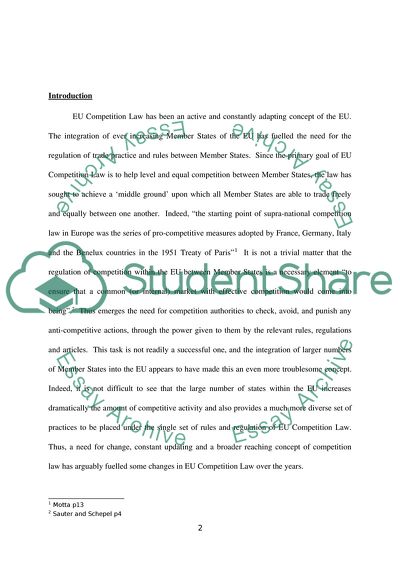Cite this document
(The Modernisation of UE Competition Law over the Past Ten Years Research Paper, n.d.)
The Modernisation of UE Competition Law over the Past Ten Years Research Paper. Retrieved from https://studentshare.org/law/1730883-discuss-the-ways-in-which-european-union-competition-law-has-been-modernised-in-the-last-ten-years
The Modernisation of UE Competition Law over the Past Ten Years Research Paper. Retrieved from https://studentshare.org/law/1730883-discuss-the-ways-in-which-european-union-competition-law-has-been-modernised-in-the-last-ten-years
(The Modernisation of UE Competition Law over the Past Ten Years Research Paper)
The Modernisation of UE Competition Law over the Past Ten Years Research Paper. https://studentshare.org/law/1730883-discuss-the-ways-in-which-european-union-competition-law-has-been-modernised-in-the-last-ten-years.
The Modernisation of UE Competition Law over the Past Ten Years Research Paper. https://studentshare.org/law/1730883-discuss-the-ways-in-which-european-union-competition-law-has-been-modernised-in-the-last-ten-years.
“The Modernisation of UE Competition Law over the Past Ten Years Research Paper”, n.d. https://studentshare.org/law/1730883-discuss-the-ways-in-which-european-union-competition-law-has-been-modernised-in-the-last-ten-years.


